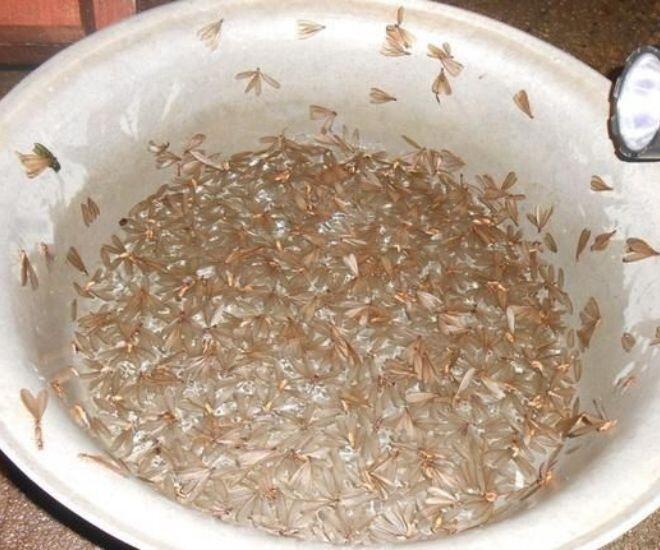
The Co Tu people primarily reside in the districts of Dong Giang, Nam Giang, and Tay Giang in Quang Nam Province, with a small population in the southwestern part of Thua Thien Hue Province. Their lives are intimately connected to the lush forests, sparkling streams, and rolling hills of the region, as well as the subtle signs and signals of nature. The rainy season, from the 3rd to the 8th lunar month each year, brings not only refreshing rainfall but also an exciting “termite hunting” season. This is when termite alates, known as “clap” in the Co Tu language, emerge in abundance. They are plump and sweet, making them a key ingredient in delectable dishes that captivate travelers from far and wide.
Termite alates are not only a nutritious food source but also symbolize abundance and prosperity within the community. Notably, the termite porridge (“clap p’cho”) holds a sacred significance. It is traditionally prepared by a Co Tu son-in-law as a gesture of respect and gratitude towards his wife’s parents. The warm and hearty porridge not only nourishes the body but also strengthens familial bonds, symbolizing a commitment to enduring relationships.
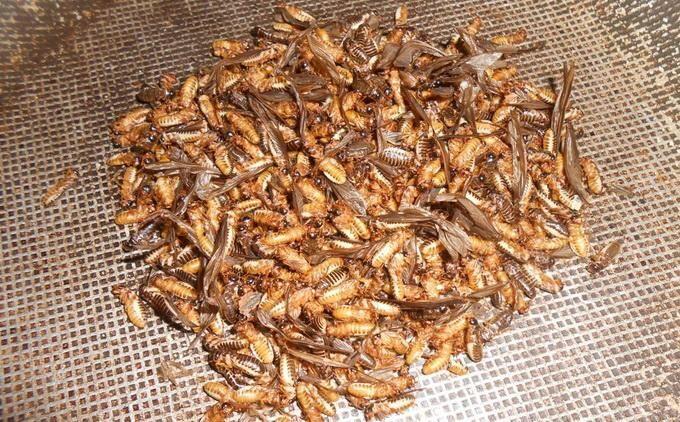
For the Co Tu people, termite catching is more than just a means of subsistence; it’s an art form and a ritual that harmonizes with nature. It showcases their finesse in observing and utilizing signals from the universe. When they notice swarms of termites leaving their nests, it’s a clear indication of impending rainfall. The entire village springs into action, preparing for a unique harvest.
They swiftly light an oil lamp or a gentle-lit bridge lamp, placing it in a large water basin and setting it in the middle of the courtyard. The soft glow from the lamp acts as an enchanting invitation. Termites, drawn to the light, flock towards it and descend upon the water’s surface. Their delicate wings become waterlogged, rendering them unable to fly, and they remain trapped in the basin. Occasionally, the water is gently stirred to keep the termites calm and still. The greater the number of emerging termites, the heavier the rainfall is expected to be, and the more abundant the harvest of these “flying shrimp” from the mountains.
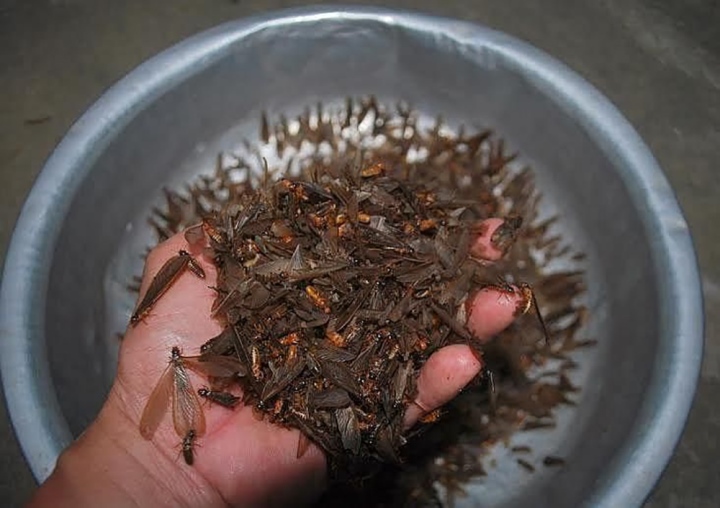
As the first raindrops begin to fall, the termite-catching activity comes to a halt. The termites are scooped into a large basket or tray. The next step requires dexterity and attention to detail: gently rinsing the termites multiple times in clean water, using fingers to lightly stir and sift, allowing the fragile wings to detach on their own. The golden-hued, plump termite bodies are then carefully collected as precious ingredients for the upcoming culinary specialties. This process exemplifies the Co Tu people’s patience and reverence for each natural ingredient they utilize.
Once properly prepared, termite alates become the star ingredient in a variety of dishes, most notably the termite porridge (“clap p’chơ”). This dish is not only delicious and nutritious but also carries profound cultural significance, likened to the “flying shrimp” of the mountains.
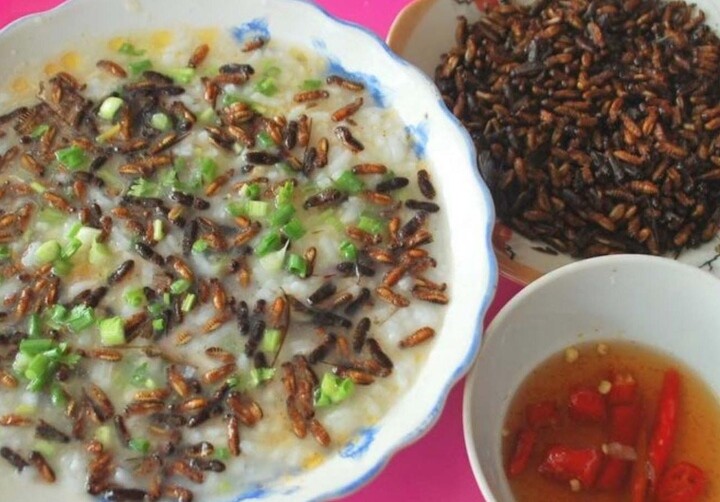
Preparing termite porridge is a simple process, yet it demands finesse to preserve the natural flavors of the termites. After cleaning and removing the wings, the termites are roasted to perfection, releasing an enticing aroma and adding a delightful crunch. Rice is cooked into a smooth, creamy porridge, and the roasted termites are then added, stirred in, and seasoned to taste. The steaming bowl of porridge emanates a distinctive fragrance, blending the sweetness of the termites with the nutty flavor of rice. The dish is unpretentious in its flavors, offering a light and wholesome experience that never ceases to captivate. On chilly rainy days in the mountains, there’s nothing quite like savoring a warm bowl of termite porridge, connecting with the harmony of nature in every spoonful.
In addition to termite porridge, the Co Tu people have crafted an array of enticing dishes using termite alates, enriching their unique culinary repertoire.

Roasted termites are a beloved snack. They are cooked on a hot pan until they dry out, releasing a seductive aroma reminiscent of roasted crickets, accompanied by a delightful crackling sound. Once cooked, they are poured onto a tray, and the wings are removed by sifting or fanning, leaving behind golden, crispy termite bodies. Roasted termites are not only a tasty treat but can also be crushed and compressed into cakes for later consumption. For preservation, the Co Tu people often roast the termites with a pinch of salt and store them in lo-o bamboo tubes, hanging them above the fireplace for casual snacking or as a delicacy during intimate drinking sessions. The sweet, buttery flavor of roasted termites is sure to leave a lasting impression on anyone who tries them.
Another mouthwatering dish is termite dip, either soaked in fish sauce or crushed with salt and chili peppers. The cleaned termites are mixed with fish sauce or crushed with salt and chili peppers to create a savory delight that tantalizes the taste buds. The salty and mildly spicy flavors blend beautifully with the buttery taste of the termites, making the Co Tu people’s meals all the more enticing. These dishes not only provide essential nutrition but also showcase the community’s creativity and their ability to make the most of nature’s bounty.
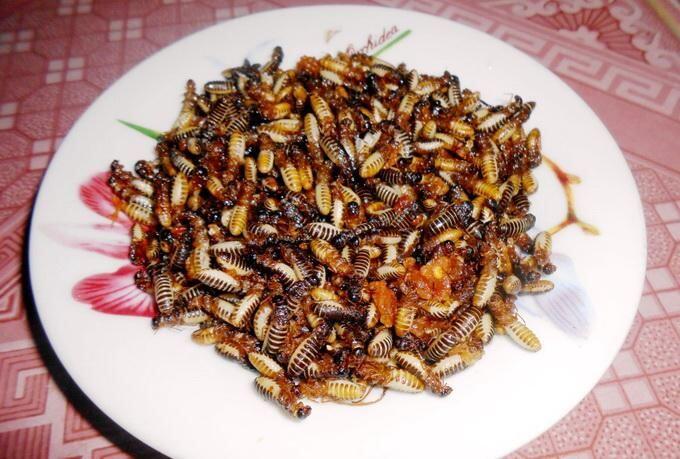
Termites are more than just insects to the Co Tu people; they have become a symbol of their culinary culture, an integral part of their lives atop the Truong Son mountains. From the refined termite-catching techniques to the diverse dishes they inspire, the Co Tu people embody a deep connection with nature, a profound respect for their surroundings, and a beautiful expression of filial piety and familial love.
A visit to the Co Tu people’s homeland during the rainy season offers not only breathtaking views of the majestic mountains but also a chance to indulge in unique flavors, to hear stories of “flying shrimp,” and to witness the preservation of cultural values passed down through generations. This journey promises to be an emotional and memorable experience, unveiling the richness and diversity of Vietnamese cuisine and culture.































